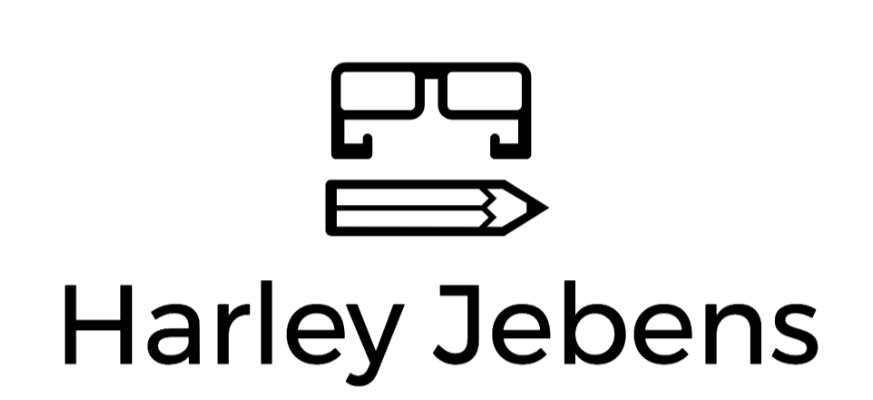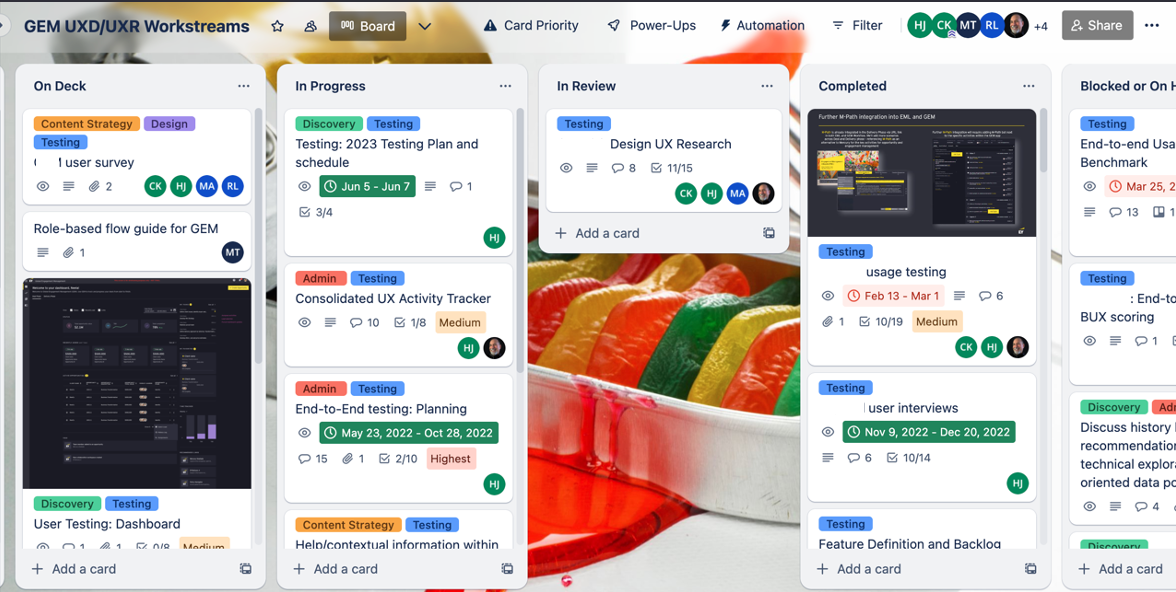
Research Ops: Applying a Design Systems approach to Research
At EY, we wanted to build out our Research Operations to catch up with the maturity of our internal design system and knew that establishing processes, tools, and infrastructure to support and scale user research would result in research that was more efficient, impactful, and integrated into the entire product development lifecycle. Looking at our efforts through a design system lens gave us a roadmap for our efforts and an approach we hoped would resonate with our larger UX design team.

ResearchOps: Applying a Design Systems approach to Research
Designers on the Experience Design and Analytics team at EY had invested much effort in building out a Design System – a collection of reusable components, patterns, and guidelines to help maintain consistency and streamline the design and development process – for EY’s consulting arm. And those efforts were beginning to pay off.
The UX research team that was part of that design team was historically very small, with research efforts being necessarily handled on an ad-hoc and one-off basis, simply due to the resources available. As 2021 turned to 2022, however, that started changing – the research team was growing and adding members. And we had the opportunity, and the resources to take a more systematic approach to how we approached and delivered our work.
We wanted to build out our Research Operations to catch up with the maturity of our internal design system and knew that establishing processes, tools, and infrastructure to support and scale user research would result in research that was more efficient, impactful, and integrated into the entire product development lifecycle.
Looking at our efforts through a design system lens gave us a roadmap for our efforts and an approach we hoped would resonate with our larger UX design team.

UX Research & Design collaboration: Standardizing our research approach and templates allowed us to focus on collaboration and helped our design teams know what to expect when working with researchers.
We wanted to draw parallels between the components of a design system and what we were building out as part of our research system.
We aligned Design Principles and Brand Guidelines with Research Principles and Guidelines that we developed and honed. We prepared “User Experience Research at EY” 101 presentations that were used as part of kick-off meetings with new teams. Discovery-based research utilizes a design thinking approach, inspiring people to think creatively to generate a broader range of solutions. Existing products are evaluated in terms of Efficiency, Effectiveness and Satisfaction. Research findings are measured and tracked across studies and projects.
Similar to the UI Components and Design Patterns common to design systems, we standardized our Research Methodology and Report Templates so that we were delivering consistent results, with formats that all members of the team could adopt, lean on and learn from. Those reports drew upon the same style guide that had been created for EY, with research-specific rules and patterns that we applied to the UX research work.
Similar to Code Components and Guidelines developed as part of a design system approach, our team worked to develop and share best practices and standardize our way of communicating and quantifying research results, including methodology for review of research findings and and a means of communicating and incorporating those findings into the development backlog, flexing to meet the approach our development teams were using, whether that be Azure DevOps or other tools.
To ensure proper Governance of our research methods, similar to governance and contribution guidelines developed in many design systems, the research team met regularly to share and vet updates or ideas for new approaches, tools, metrics, etc.
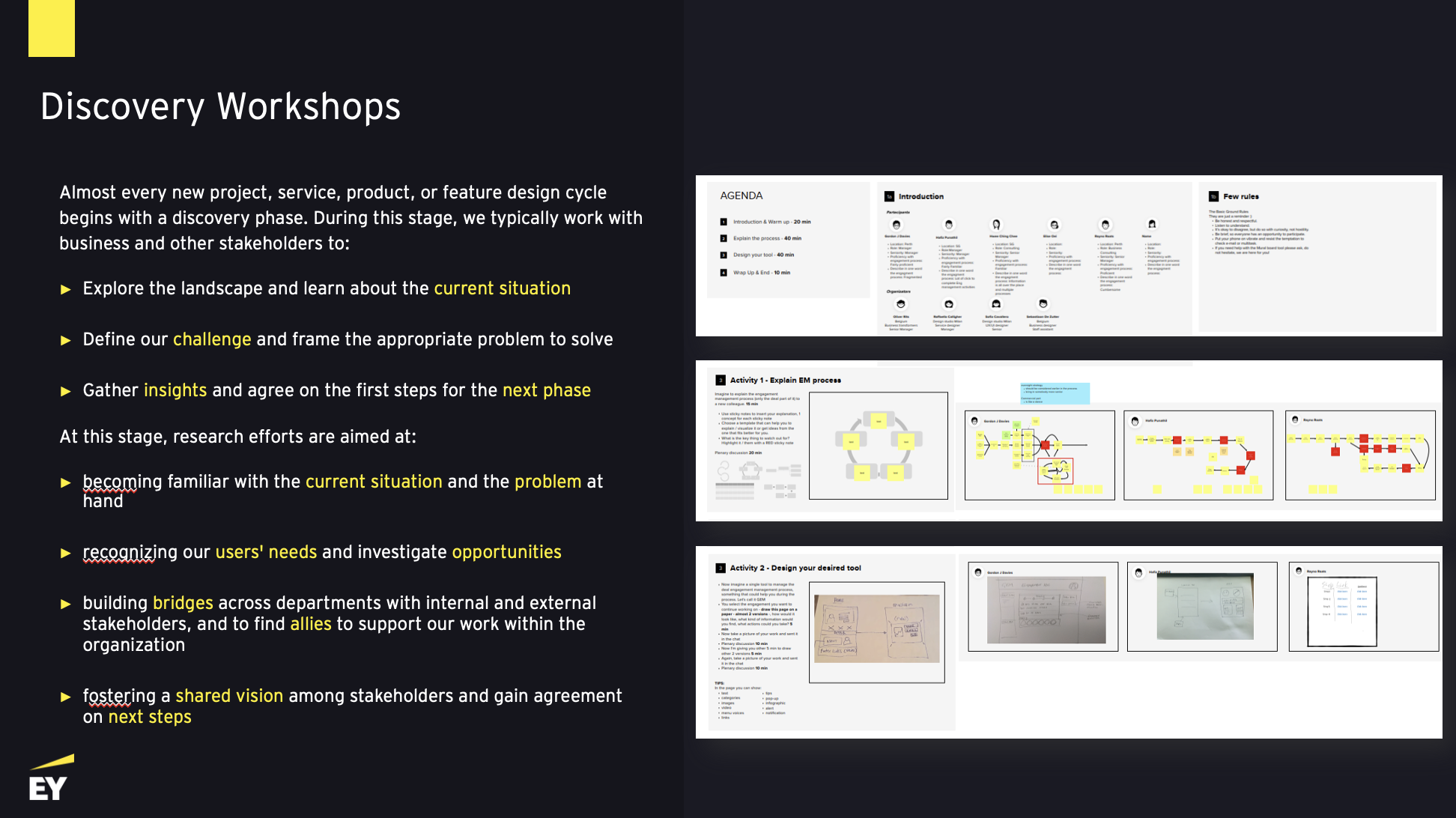
Discovery Workshop overview slide, from a presentation on UX Research at EY.
Our small research team worked together to create:
Design Research Templates: We developed templates for research artifacts that our team regularly referenced – interview guides, plan and report templates, survey questionnaires, heuristic evaluations, participant tracking matrices, and data analysis frameworks. The idea was to provide templates as a starting point for researchers, saving time and ensuring a consistent structure across studies, and as a go-to source when it came to onboarding new team members to our methodologies and approach. Industry experts shared their approaches with us, prompting adjustments to those templates. And we met weekly to share learnings and best practices.
Research Guidelines: We worked on an evolving set of guidelines and best practices to outline the research process, methodologies, and documentation standards agreed upon by our team. Industry experts shared their approaches with us, prompting adjustments to We met weekly to share learnings and best practices.
A process for planning: Approaches for planning and prioritizing our research work varied amongst our team. We would meet, share and learn from one another, and then adapt our learnings to our own approach. The team I was on settled on using a Trello board to track planned, in-progress and completed research activities. We also use Miro to capture potential areas of inquiry and track questions we were hearing through multiple feedback channels.

Trello board used to plan UX research activities.
Participant Recruitment Materials: Our standardization and templatization efforts extended to a common set of materials and templates for participant recruitment, including email and Teams introduction templates, screening questionnaires, and consent forms. We shared approaches to recruiting participants, including organizational allies we identified, and what we found worked most effectively in terms of tracking research participant activity.
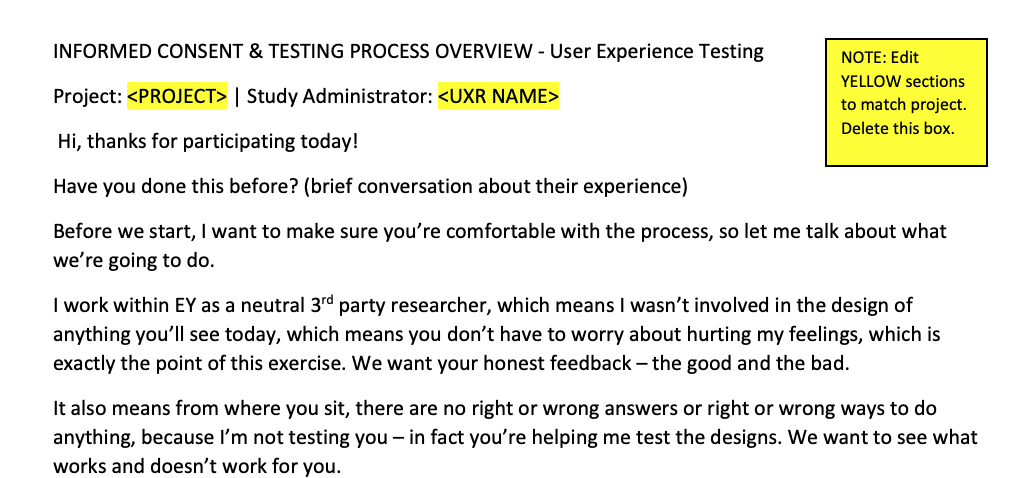
Informed consent template for our research work.
Our design system itself was informed by research: We looked for opportunities to conduct research and feed findings back into the design system, so that our EY design approach was backed by research and represented patterns that resonated with and worked to make our users’ lives easier.
Research Metrics and Dashboards: We worked from an initial set of key performance indicators (KPIs) and metrics to measure the impact and effectiveness of research efforts. I was charged with evolving those metrics and creating a common visual dashboard for reporting. Our goal with that reporting and those dashboard is to present metrics in a clear way that can resonate with business stakeholders, while also being flexible enough to adapt to new needs and requests from leadership.
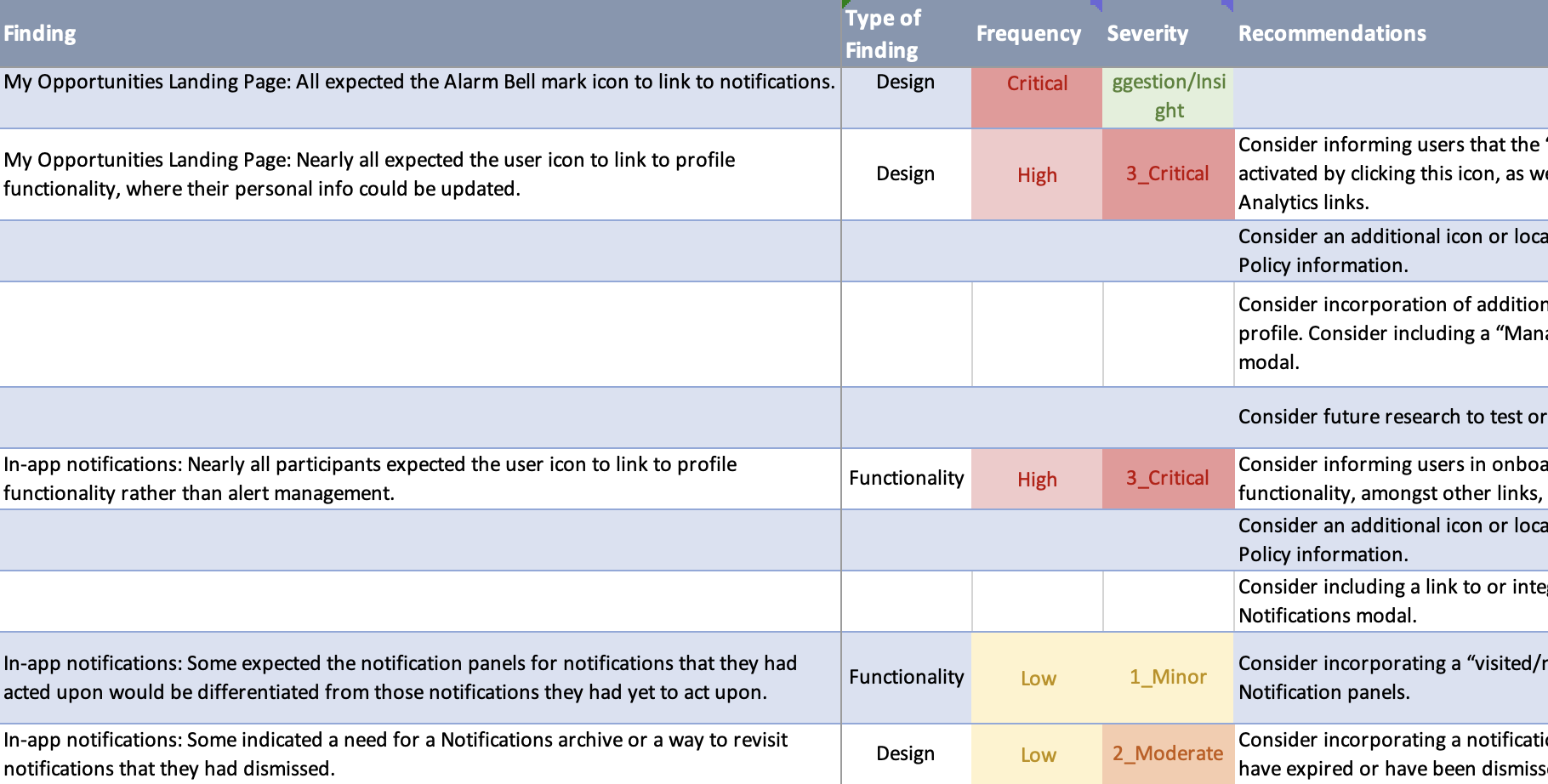
Metrics tracking template.
Research Toolkits: We curated a collection of research tools and software that researchers can utilize, which included survey platforms and approaches, usability testing tools, and more. I built out a guideline to building remote unmoderated surveys using the tools approved by EY (Qualtrics and Optimal Workshop) and disseminated those guidelines to our team and other EY UX researchers.
Research Reporting Templates: We cooperatively developed standardized templates for research reports, presentations, and executive summaries. Our templates were not static – we commonly shared ways we packaged and prepared findings that resonated with our teams, and incorporated those approaches into our templates. This approach provides a living, growing template that demonstrates continuous improvement with every research report we prepare and present across our UX research team.
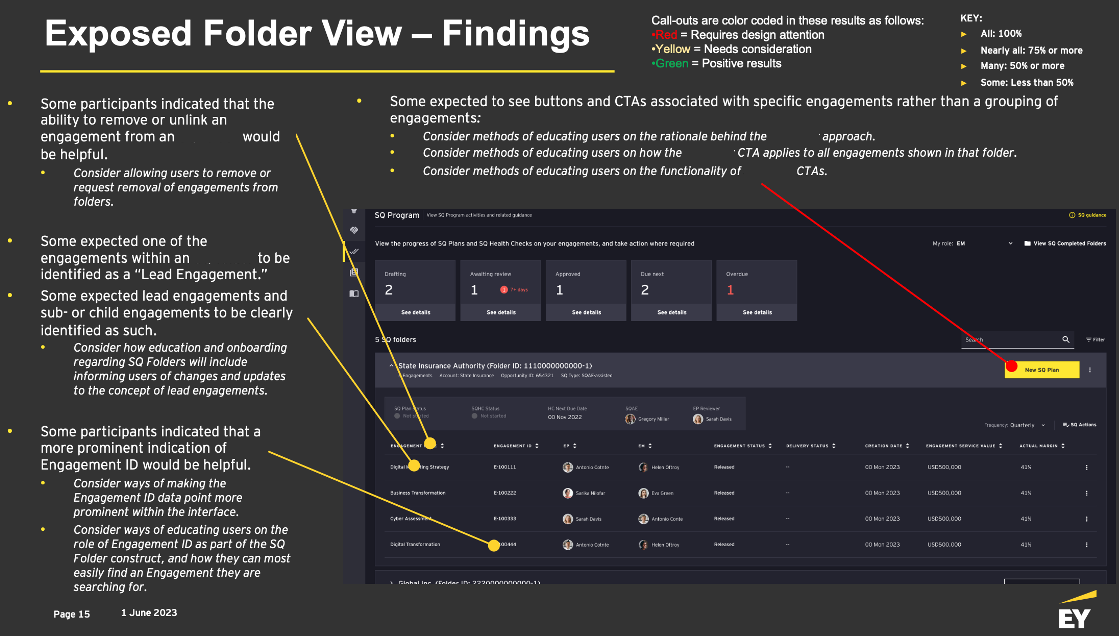
Research report templates delivered findings in a standard and consistent way.
A centralized Research Repository: We created a Microsoft Teams repository for templates and best-in-class examples of our work, as well as research insights, findings, and reports. And we worked to identify and make the case to our organization to approve a more robust repository system.
Iterative Improvement was built into this approach. Our Research Ops work was far from complete – solidifying our platforms and building out a true training and onboarding approach are but two of the things on our Research Ops to-do list. In many ways, we are just on the initial stages of this journey. We regularly review and revisit the groundwork we have laid, however, to see how it is working for our fellow researchers as well as the designers and stakeholders who are the audiences for much of our work.
But by applying this design systems-informed approach to Research Ops, we are constantly working to establish and evolve our consistent processes, tools, and guidelines to bring efficiency and scalability, and improve the impact of research organizationally within EY.
